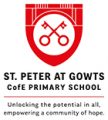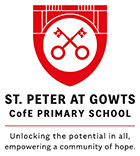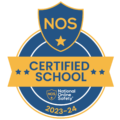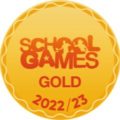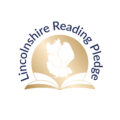St Peter’s Little Learners- Ideas for younger children at home
We know many of you have younger children who might be struggling during Lockdown so we have created this pack to hopefully give a few more ideas to keep them busy! For under 2 year olds, some activities might need more supervision if they like to put everything in their mouths.
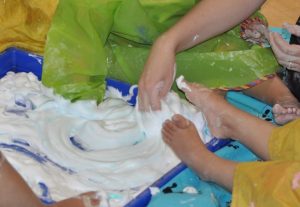
Messy Play
For many little ones, the messier the better! Many of these activities will amuse little ones for a short while. If you don’t have a Tuff Spot, you could use large baking trays, washing up bowls, old baby baths, gardening trays, trugs or trays to put messy play in at home.
Shaving Foam– mark making and playing in foam is a lovely sensory experience for children. You can add toy cars, kitchen utensils or plastic cups etc to it to change what they can do. (Please watch younger children- if they are likely to put things in their mouths this will either need close supervision or try a food based one below)
Rainbow Foam– this is so lovely to do! You need 2 tablespoons of fairy liquid and 1/4 cup of water in a bowl and, for colour, add a few drops of food colouring. Whisk (if you have a mixer it’s less energetic!) until you have stiff peaks and play. (Please watch younger children- if they are likely to put things in their mouths this will either need close supervision or try a food based one below)
Gloop– simply cornflour and water- children can scoop it and squeeze it to then let go and watch it turn from solid to liquid. We use this in nursery- the children spend a lot of time experimenting with it.
Shampoo Gloop– add shampoo and cornflour to a bowl and watch children explore!
Moon Sand– 8 cups of plain flour, 1 cup of baby or vegetable oil- you can do a lot with this (and put it in a box to keep it afterwards..) you can use it like sand to make sand castles or put lots of kitchen cups, spoons etc with it.
Cooked spaghetti– if you have just a little of this in a tray, children love exploring it and it doesn’t matter if they eat it! Trays with a tin of beans in and spoons/ cups also works well.
Soft Dough– flour, conditioner and food colouring or glitter- another form of play dough.
Bubble Dough– 1 cup of cornflour, ½ cup of washing up liquid, 2 teaspoons of cooking oil. Mix together! It’s a bit like putty.
Clean Mud– 3 cups of bicarbonate of soda 1 cup of water. You can add food colouring to mix it up. If it’s too runny add more bicarb.
Food based exploring trays– you can put all sorts of foods in trays to explore such as cornflakes, jelly, custard, rice pudding, angel delight, oats, ice cubes- obviously dependent on food supply.
Painting-painting is a great sensory play activity, it encourages dexterity in their hands and an understanding of early science with colours mixing and changing. You could paint simply on paper, on large paper (or lots of sheets of paper stuck together on the floor) or on foil either in small pieces or a large roll rolled out.
Cotton wool painting– Using pegs attach cotton wool to the pegs and put some paint in pots ready for children to dip their cotton wool into.
Car mark making– using wheeled vehicles to mark make- Sellotape large sheets of paper to the floor and provide trays of different coloured paint. Encourage the children to wheel the vehicles in the paint and push them over the paper creating different marks.
Printing– paint and anything you can find to use to print- play dough cutters/ potatoes/ cotton reels, string, buttons.
Edible finger paints– Using natural yoghurt and food colouring, mix these together to create edible finger paints.
Puffy Paint– ½ cup of water, 1 cup of flour, 1 cup of salt and food colouring. Mix together and paint- leave to dry overnight.
Water Play– most young children love water play.. in Little Learners this is usually one of the most popular areas. You only need a tray or container (see messy play) with some water in with or without bubbles and then add different items each time.
You can alter and change it by what you add-
- Add some safe kitchen utensils (ie slotted spoons, small and big spoons, plastic bowls, cups, jugs, anything with holes in, will provide a fun and clean (if a little wet!) activity.
- Add food colouring to change the water colour
- Add old spray bottles (ensure they are fully clean!) or soap pump bottles. Something I use all the time is the used up squeezy sauce bottles, once washed they are great to fill and add and help strengthen muscles.
- Cloths and babies or toy cars
- Plastic cups and plates
- Plastic bottles and cups and spoons
- Change the feel of the water by adding things such as ice cubes

Sensory Play
Treasure baskets- a treasure basket is a collection of everyday objects chosen to stimulate the different senses. It is one way of giving babies a wide range of experiences as well as the chance to explore and decide for themselves what they want to play with. Have baskets or containers which are strong enough for the baby/ little one to lean on without tipping up. Use objects which are safe from around the home that are interesting items for your baby or toddler to find.
Possible things you could add- bubble wrap, toilet rolls, empty yoghurt containers, bells, balls, feathers, wooden spoons, slotted kitchen spoons, cloths and different textured materials, loofah, brushes, wooden spoons, bath mitts, car mitts, whisks, keys on a keyring, toys, different textured materials and clothes ie scarves, sponges, plastic bottles with things inside…the list is endless!
Exploring-Babies and toddlers love to explore so put toys in boxes with lids, under blankets and inside pillow cases. Fill baskets with safe objects such as wooden spoons, plastic bowls, and tennis balls.
Sensory bottles– Fill an empty plastic bottle with different materials such as rice, pasta and add glitter or some powder paint, you can also add water, oil and food colouring- anything that will move and interest your little one.
Box play-open up a large box at each end so it forms a tunnel. On the inside have textures to crawl on such as bubble wrap, carpet squares, silky materials, pillows or some leaves.
Foil blanket exploring– simple but very effective! You will need an emergency foil blanket.. you can then give your little one chance to explore- hide things under it, shake it up and down, scrunch it up, move it, put things on top of it- hide under it. I’ve used this with my own children when they were very young babies and they loved exploring it, the sounds, the light reflecting and the feel of it.
Water beads- these can be used in a similar way to other filling and pouring activities or in a water tray activity.
Shredded paper-to explore! You can hide things in the paper, put it in a tray, add water to it, throw it, fill and pour with it… or see what the children do with it!
Musical Kitchen Band– children love to make noise! At home you could have a kitchen band by using pans turned upside-down and wooden spoons to bang on them. You could also use plastic boxes and bowls or fill up plastic bottles with different levels of water to hit too.
Paddling pool play-bring the paddling pool inside for a change. You can fill it with balloons, pillows or different textured material scraps. This is great for newly sitting infants and extends sensory play. A laundry basket with pillows around it works well too and makes a fun place for your baby to sit and watch as you do things around the house.
Balloons-fill some balloons with water (use a funnel before blowing them up) or some with sand. The balloons will feel, move and sound different. This helps to develop cause and effect and to understand that their actions have a reaction.
Light projectors/ disco balls– for younger children to watch and explore light moving.
Clean painting– put paint into zip up clear bag, such as a freezer bag. You can put shaving foam with it or things in it such as glitter or shapes and then let children push the paint around inside the bag and watch what happens when they mix it (I try and put a different coloured paint in each corner) it very quickly is mixed together! Make sure you tape over the zip so they can’t open it!
Hair gel sensory bags– as above put hair gel and little things such as plastic toys, beads, sequins, shapes etc in the hair gel and zip up the bag and secure with tape. Children can explore without getting messy!
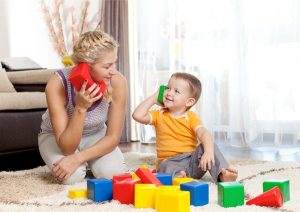
Language Play
Talking on telephones– to encourage language, pretend to talk on phones to each-other. If you have an old phone let your little one explore the buttons and the receiver.
Sharing stories– reading stories with your little ones are so important for so many things! There are lots online too with animations linked to them.
Sing Songs– there are lots of wonderful songs out there to sing.. if you aren’t a singer, you can find lots of singing videos online (Barefoot book on You Tube)
Role play– lots of small role play opportunities with dressing up clothes, linked objects such as a shop with a till, food tins and packets and some pretend money. A great chance to practice talking in play!
Toys and puppets– pretend talk with toys and puppets is great for developing language- you can model speech to your child by using them too!
Treasure Hunt-ideas to try-
- Get out a bucket or a toy box and put some toys into it. Close your eyes and go on a “treasure hunt.”
- If you have a sandbox, bury toys in the sand and then go on a treasure hunt!
- As you and your child pull toys out of the box, name them and say something about them. For example, if you pull out a doll…say “doll, I found the little doll!”
Sort it out – a game to help toddlers and young children learn and use new words. Gather together different items from around your home– toys, clothes and food items. Place them into a bag or box.Tell your child/ren that you’ve been having a tidy up, but you need help to sort the items out so they can be put away.Ask your child/ren to pull out an item and then ask, “is it something we eat, or something to play with?” Get them to put items into separate piles, ready for putting away. Why not take the opportunity to chat about the items as you sort them: “yes, you’re right, gloves are clothes, and they are something we wear on our hands when it’s cold!”
Some different activities for different age groups here– https://small-talk.org.uk/
and here- https://www.bbc.co.uk/tiny-happy-people

Filling and Pouring
Young children usually love filling and pouring! This can be really simple things you hopefully have at home that will occupy them for a short while.
Use any of the messy play materials or sand/ soil/ gravel/ cereal with a range of containers, spoons, scoops, spades, to encourage children to fill up the containers and then pour them out again. This also works with water and plastic bottles/ jugs/ cups.
Posting activities
Use an upturned colander and either pipe cleaners or uncooked spaghetti to post through the holes.
Have a box with a slit cut in the top to post smaller things like lollipop sticks, you can use a range of different boxes and put different things inside the boxes for your little one to open and explore. They can put them back in, swap boxes and explore opening and closing boxes.
You can use an old tissue box and put pieces of material or other things your little one can pull out- they will enjoy pulling them out and then putting them back in again.

Fine/ Gross Motor
At this age, any activities developing their co-ordination and motor skills help their development whilst being fun too!
Play dough– play dough is always something that children seem to love to play with. It is useful for their fine motor development, exploration and imagination. You can add all sorts to the basic recipe such as herbs, food colouring, smells such as essences or flavouring. You can even add cocoa powder to make play dough mud! This is our basic recipe. You can also add a few drops of glycerine to add shine but it isn’t necessary.
2 cups of plain flour
½ cup of salt
2 tablespoons of oil (vegetable)
2 tablespoons of cream of tartar
1 cup of water (if you use very hot water this tends to melt the salt and so it lasts longer- I boil the kettle and leave for a few minutes before adding. If you are making it with children either use cold or mix the water in and cool before giving to them)
Building Dens– you can build dens with and for your little ones out of so many things! You could use cushions and pillows, sheets and the backs of chairs, clothes horses and pegs… anything that gives a cosy little space for your little one to hide in and explore! You could use the space to read stories too. Mine love dens and torches to explore.
Peg games– pegging pegs is great for fine motor development. Just simple pegs you use to hang up your washing and a few boxes or baskets that they can peg them on and off or mini washing lines between two things also works.
Mark making– children like exploring making marks so any crayons etc and paper or sticks on the ground- anything that makes marks. Chalks can also be attached to toy cars to draw as the cars move.
Throwing– my little boy has always loved throwing.. anything and everything.. so we try and think of things that would work for this inside to keep most of our house intact! We have found the following things work well
- A bin/ tub and some of the plastic ball pit balls to throw
- Different sized boxes to aim at or throw into (You can make it harder by just cutting a hole in boxes rather than having them open)
- Scrunched up newspaper to throw
- Balloon bouncing- blow up some balloons and bounce them to your little one- bouncing them around the room can be great fun!
- Beanbags, if you have any.. you can easily make some if not!
- Targets to throw at – drawn on paper and stuck on the wall or boxes on their end stacked up (and stuck together)
Indoor obstacle course– you could have cushions to jump and roll on, chairs to crawl through, boxes to climb in and out of and tables to climb under. These all help to develop your little one’s physical skills.
Stacking on a plunger– use a plunger and cut up a cardboard roll (ie toilet roll) into rings for stacking onto the plunger. You could also use a kitchen paper towel holder.
Cup stacking– using IKEA style plastic cups, how tall a stack can your child make? They enjoy knocking them over too!
Dropping lentils/beans– have a plastic bottle and drop lentils/ peas into it- great for little ones to try and pick up- make sure this is supervised carefully.
Threading– pasta tubes/ cereal hoops onto uncooked spaghetti (stand the spaghetti up in play dough to allow stacking- make a row of 4 pieces so children can drop the hoops onto them.)
Bubble blowing– blowing bubbles that walking little ones can run to catch and younger babies can reach for, are always a good option and you can make your own bubble solution at home and use things such as string to make bubbles from.
Large bubbles– use 6 cups of water, 1 of fairy liquid and 1 teaspoon of glycerine (if you have it) and then make a circle with a piece of string.. dip and move around to make big bubbles.
Mini sandpit– use a large box and fill it with sand. Add some sand toys (or other things that can be used ie toy cars, combs, kitchen spoons etc) and you have your own mini indoor sandpit that you can pop the lid on and put away when you have finished.
Water painting– a favourite with many of our little ones, a range of paintbrushes- we often use adult decorating paint brushes as they are much thicker and work different muscles, and a pot of water. They can then make marks on any surface- we usually do this one outside on floors, walls etc.
Washing things with bubbles and sponges/cloths- washing toy cars/ washing babies- in an old baby bath/ in a washing up bowl or in large oven trays.
Online Play/ Groups/ Activities
If you are on Facebook there are lots of wonderful people putting on groups, ideas and videos for you to do with your little ones. These are just some of those out there.
MamaTribe– this group has some online sessions every day for a range of ages.
Social Distance Tots– free baby/ toddler group every weekday 10.30am
Dancin’ Tots– music and online regular sessions
Dramatots-a regular drama linked live video for little ones… a new theme each time! Previous ones are on Youtube.
At Home with Tots Facebook Group
CaptainfantasticKids– online toddler group at 10 every week day.
Play-Hooray videos at 10am daily (some aimed at younger children)
Fanfare Music– online music se



 ssion at 10 daily
ssion at 10 daily
Boogie Mites– free online music and movement classes for under 5s.
Keep checking the groups, there are more every day- these are just some we have used.
You Tube
The Learning Station- has lots of movement and action games/songs
Lil’ Pacs- Lincoln’s LPAC toddler group is recorded online!
Baby Yoga (lots of different videos)
Baby Massage (lots of different videos)
Baby disco dancing (again lots of videos to choose from)
Baby Bum- nursery rhymes with videos
Jiggly Wrigglers- movement, dance and music classes.
LittleLearnersUK- daily activities (also have a facebook page)
Maggie and Rose Mini Musicians
There are many more youtube channels you could use- these are just a few I have used.
Websites
BBC Sounds- https://www.bbc.co.uk/sounds/category/childrens-music
Imagination Tree – https://theimaginationtree.com/
Learning4kids- www.Learning4kids.net
5 minute Mum- https://fiveminutemum.com/
Blog- www.ossiconesoxygen.com some great science-based learning play ideas.
www.messarounduk.com- free resources, blogs and ideas.
https://hungrylittleminds.campaign.gov.uk/
There are many more websites with more ideas out there- these are just a few I have used.
Instagram ideas (borrowed from 5 minute Mum)
@peachy_speech – Lisa (an SLT) has LOADS of good ideas as well as tips and advice for Speech and Language which means her games and ideas are PERFECT for toddlers just learning to speak as well as beyond.
@OTplayfortoday – Vicky is an occupational therapist with loads of brilliant play and educational ideas.
@the_play_at_home_mummas- Rosie and Emilie are wonderful and both EYFS teachers. If you’re looking for educational games they have a bucket full.
@mr_early_years1 – another Early Years specialist with lovely loose part and tray play set ups on his instagram page
@bakefulplay – Laura wrote me a blog post under guest blogs. She also has a fab website and a mail delivery baking set service. Your go to for ANY kind of baking at home with kids.
@informed.choice.parenting – Cheryl is awesome at explaining child behaviour which might come in useful when you’re finding things tough at home with the kids and want to understand more about why they might be behaving the way they are.
@thedadlab – easy science experiments to try at home with your kids. He has a book and a website too.
Also @thechildcareguru_ has a forest school book out for ideas to do in the garden or woodland and parks
@thecraftymumma – Emma wrote a fabulous five minute crafts post for me and has LOADS of ideas on her instagram page.
@craftybearclub – also crafting wonders who are now posting ideas for kids on their grid daily.
Instagram acccounts for babies- ideas
@mothercould
